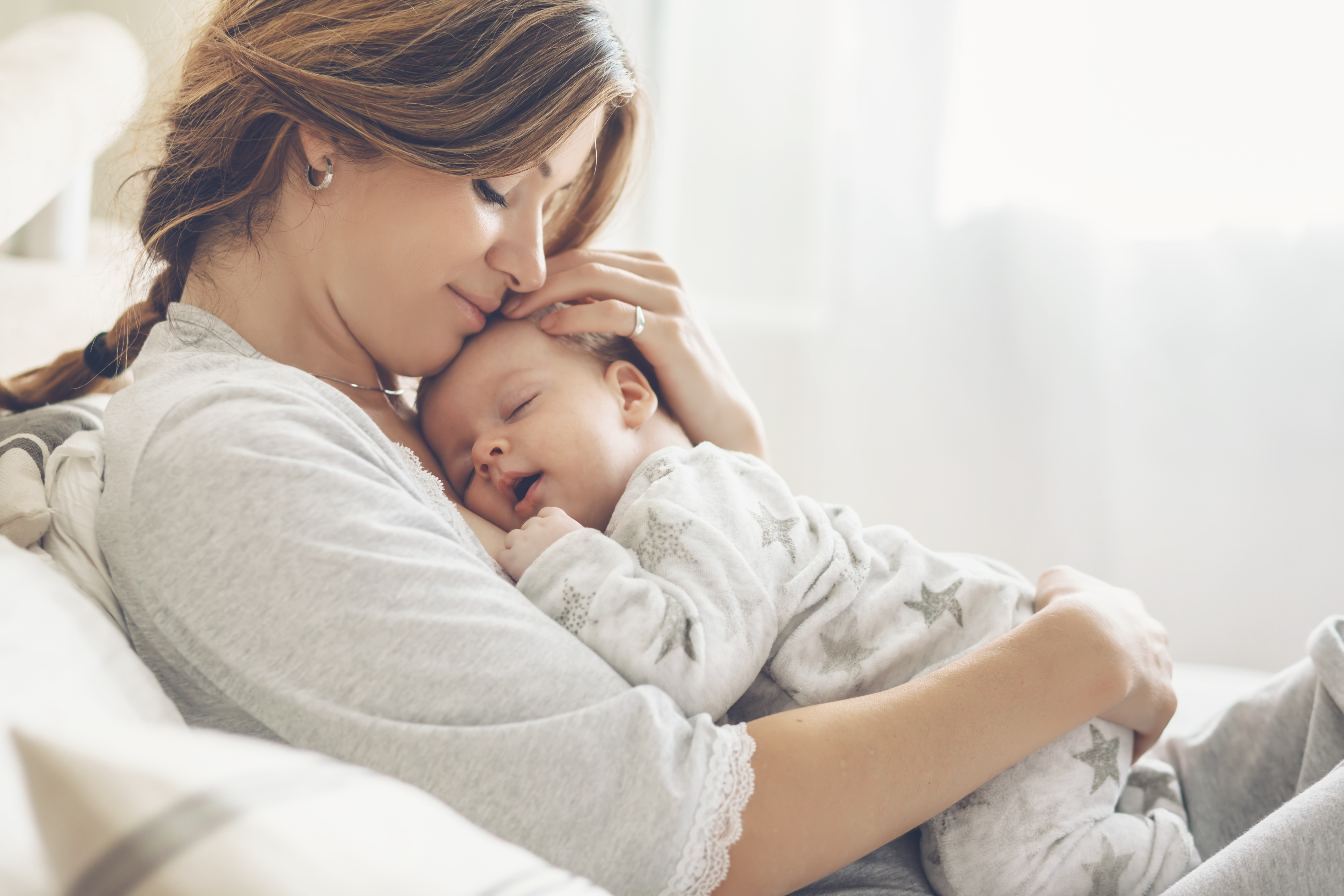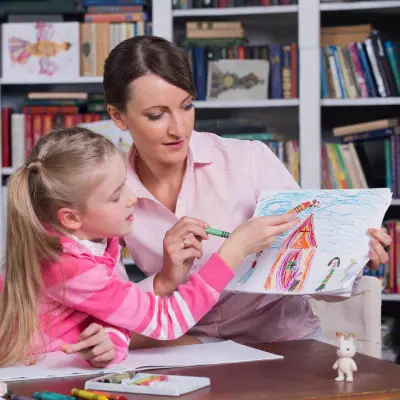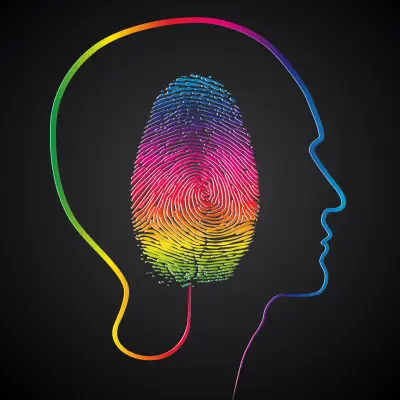Attachment styles are a key topic in understanding how we behave in relationships. Whether you've just stumbled upon the term or want to deepen your understanding, this guide is crafted for you.
We’ll explore the different types of attachments and what they mean. By the end of this read, you’ll recognise various attachment styles in adults and even be able to identify your own. So, let's get started on this journey of discovery!
Jump to:
- What Are Attachment Styles?
- What Are the Different Attachment Styles, and What Do They Mean?
- The 4 Attachment Styles: A Deep Dive
- Secure Attachment Style
- Anxious Attachment Style
- Avoidant Attachment Style
- Fearful-Avoidant Attachment Style (Disorganised)
- What is my Attachment Style?
- Journeying Towards Secure Attachment

What Are Attachment Styles?
Attachment styles are simply how we typically behave in our relationships. It’s how we connect, see ourselves and others, and handle closeness and distance with people in our lives. These behaviours begin to develop when we are children, based on our relationships with our parents or caregivers. Our early patterns can shape how we engage with friendships, romantic relationships, and even how we parent our children. They become the foundation for how we build relationships as we grow up.
But the good thing is, these styles aren't set in stone. Just because we might lean towards one style doesn't mean we can't change. By learning about our attachment styles, we can better understand ourselves and work towards healthier and happier relationships. Whether we need to learn to be more independent, more comfortable with closeness, or just find a better balance, understanding our attachment styles is a great first step.
What Are the Different Attachment Styles, and What Do They Mean?
There are four attachment styles in romantic relationships. While you might find that one attachment style sounds a lot like you, seeing parts of yourself in several styles is completely normal. We’ll delve deeper into the four attachment styles later, but here’s a quick summary:
- Secure Attachment: Comfort with intimacy and autonomy.
- Anxious Attachment: Craving closeness and fearing abandonment.
- Avoidant Attachment: Valuing independence and distancing yourself from emotional depth.
- Fearful-Avoidant Attachment: A mix of anxious and avoidant tendencies, often leading to a turbulent relationship dynamic.

The 4 Attachment Styles: A Deep Dive
Now we know the basics, let’s take a deeper dive into the four attachment styles, including traits for each attachment style.
1. Secure Attachment Style
With a secure attachment style, you feel comfortable in most social situations, whether interacting closely with someone or enjoying some time to yourself. This comfort comes from a deep-seated sense of self-assuredness and trust in others.
Being securely attached means you're okay with the natural flow of relationships. You know your worth and feel confident that you deserve love and respect. There's a healthy balance between connecting with others and taking time for yourself, and you handle this balance without much fuss.
Signs You Might Be Securely Attached:
- Ease with intimacy and independence: You enjoy being with people but don't feel lost when alone.
- Trust in relationships: You feel that others will be there for you and are there for them without much worry.
- Open communication: You can talk about your feelings and be a good listener when others share theirs.
- Responding to others' needs: You consider what others need from you in a relationship.
- A feeling of worthiness: You believe you deserve love and respect.
- Dealing with conflict: You can manage disagreements calmly and constructively.
2. Anxious Attachment Style
If you have an anxious attachment style, you might fret about your relationships. The attachment style desires a lot of closeness and often seeks reassurance from loved ones to feel secure. It's like having an internal alarm that frequently asks, "Are we okay?" and you seek to silence this alarm by ensuring that those around you show you care and commitment.
This attachment style stems from a strong desire to connect deeply with others but is coupled with a fear of loss or rejection. You might notice that you're very attuned to your partner's moods and behaviours, and any sign of change can be unsettling.
Signs You Might Be Anxiously Attached:
- Frequent worry about your relationships: You might often think about your relationships and their stability.
- Seeking constant reassurance: You may need to hear and see evidence that your relationship is secure.
- Feeling clingy: You might sometimes feel the urge to be very close to your partner physically and emotionally.
- Sensitivity to partner's moods and actions: You're highly aware of any shifts in your partner's mood or behaviour and deeply affected by them.
- Fear of abandonment: You might persistently worry that your partner will leave or lose interest.
- Difficulty with separation: Time apart from your partner can feel particularly challenging or stressful.
- Overthinking and overreacting: You may read deeply into small actions or words from your partner, which can sometimes lead to misunderstandings.
Recognising these signs in yourself is not a cause for concern but an opportunity for growth. By understanding your attachment style, you can begin to challenge your fears and work towards more secure and trusting relationships.

3. Avoidant Attachment Style
People with an avoidant attachment style value independence and often see themselves as self-sufficient. They tend to feel most comfortable handling life's challenges on their own and may associate independence with strength and reliance on others with weakness.
For someone with an avoidant attachment style, keeping a certain distance in relationships is a way to maintain self-sufficiency. This can mean emotionally holding back, even in close relationships, to avoid feeling vulnerable. When conflicts arise, the instinct may be to step back or shut down, as deep emotional exchanges can feel overwhelming or intrusive.
Signs You Might Be Avoidantly Attached:
- Highly values independence: Being able to handle things on your own is your top priority.
- Keeps others at arm's length: You maintain a certain distance in relationships, often avoiding deep emotional involvement.
- Withdraws during conflict: When disagreements or intense emotional situations occur, you may retreat or disengage.
- Struggles with intimacy: Getting close to others and sharing your inner world can take time and effort.
- Prefers not to rely on others: You're more likely to rely on yourself than to seek help or support from others.
- Rarely seeks emotional support: You might not often share your struggles or seek comfort from others.
- May seem detached or unemotional: Others might perceive you as aloof or without strong emotions.
Understanding your attachment style can be the first step towards growing in how you connect with others. If you recognise these signs in yourself, it's an opportunity to explore how you can be more open and connected in your relationships while still honouring your need for independence.
4. Fearful-Avoidant Attachment Style (Disorganised)
Those with a fearful-avoidant attachment style often experience mixed feelings about close relationships. They may desire the warmth and closeness that relationships can provide but feel hesitant to get too close due to fear of being hurt. It's a challenging position where the desire for intimacy is counterbalanced by the urge to protect yourself from potential pain, leading to a fluctuation between seeking affection and distance.
This attachment style can result from past experiences where trust was broken or emotional needs weren't consistently met. As a result, there can be a fear of vulnerability and a struggle to create a stable, trusting bond with others.
Signs You Might Have a Fearful-Avoidant Attachment Style:
- Conflicted feelings about intimacy: You may feel torn between the urge to connect deeply with others and the need to retreat for safety.
- Difficulty trusting in relationships: Trusting others, and even yourself, in making relationship choices can be a complex challenge.
- Fear of being hurt: Concerns about emotional pain might make you cautious in forming close bonds.
- Push-pull behaviour: You may find yourself seeking closeness one moment and then feeling overwhelmed by it the next, leading to mixed signals.
- Sensitive to rejection: Even minor signs of cooling interest from others can trigger a strong reaction.
- Struggles with stable relationships: Maintaining consistent and stable relationships may be difficult due to fluctuating emotions and reactions.
- High emotional reactivity: You might react intensely to relationship stressors, which can create a cycle of conflict and reconciliation.
Understanding the fearful-avoidant attachment style is vital to healing and building stronger, more consistent relationships. It opens the door to working through fears and learning to embrace both the risks and rewards of close connections.
Recommended for you!
Best SellersWhat is my Attachment Style?
If you’re still curious about your attachment style, here are some reflective questions to ponder:
- How do I react to conflict in my relationships?
- What do I value most in my interactions with others?
- How do I handle emotional closeness and distance?
Journeying Towards Secure Attachment
We’re all able to move towards a more secure attachment style. It’s about understanding ourselves, being mindful of our patterns, and consciously working towards the relationships we desire.
If this guide has sparked your curiosity, why not take a step further? Our Attachment Theory Diploma Course is specially designed to provide you with deep insights into attachment styles and practical strategies to foster secure relationships.
As a reader of our blog, we’re offering you an exclusive opportunity to enrol in this course for just £29! It's not just a course; it's a journey towards understanding the heart of your relationships.













